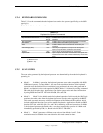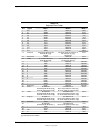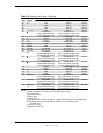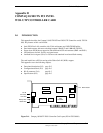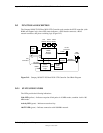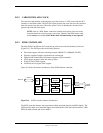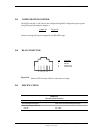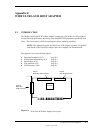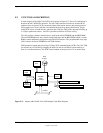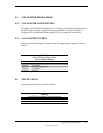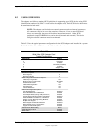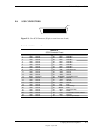
Appendix D Compaq 10/100 TX PCI Intel WOL UTP Controller Card
Compaq Personal Computers
Changed - June 1998
D-4
D.2.4 POWER MANAGEMENT SUPPORT
The controller card provides system wake up using network events and supports both APM and
ACPI power management environments.
NOTE:
The APM and ACPI environments use different methods to implement the
Wake-On-LAN function. The cable connection between the controller card’s WOL
header and the system’s WOL header should be complete to insure that the wake up
feature will occur for both the APM and ACPI environments.
D.2.4.1 APM Environment
The Advanced Power Management (APM) functionality of system wake up is implemented
through the system’s APM-compliant BIOS and the controller card’s Magic Packet-compliant
hardware. This environment bypasses operating system (OS) intervention allowing a plugged in
unit to be turned on remotely over the network (i.e., “remote wake up”). In APM mode the
controller, powered by the +5AUX voltage through the WOL header, will respond upon receiving
a Magic Packet, which is a packet where the node’s address is repeated 16 times. Upon Magic
packet detection, the controller card asserts the WAKEUP signal (for about 50 milliseconds) that
is routed through the WOL header and cable to the system board where power control logic turns
on the system and intitiates the boot sequence. After the boot sequence the BIOS clears the PME-
signal (from which WAKEUP is derived) so that subsequent wakeup events will be detected.
D.2.4.2 ACPI Environment
The Advanced Configuration and Power Interface (ACPI) functionality of system wake up is
implemented through an ACPI-compliant OS such as Windows NT 5.0 and hardware that is
compliant to the PCI power management specification. The following wakeup events may be
individually enabled/disabled through the supplied software driver:
♦ Magic Packet – Packet with node address repeated 16 times in data portion
NOTE
: The following functions are supported in NDIS5 drivers but implemented through
remote management software applications (such as LanDesk).
♦ Individual address match – Packet with matching user-defined byte mask
♦ Multicast address match – Packet with matching user-defined sample frame
♦ ARP (address resolution protocol) packet
♦ Flexible packet filtering – Packets that match defined CRC signature
When an enabled event is received the controller card asserts the PME- signal that is used by the
system board to initiate its wakeup sequence. Note that the WAKEUP signal is also asserted but
not required in the ACPI environment.




